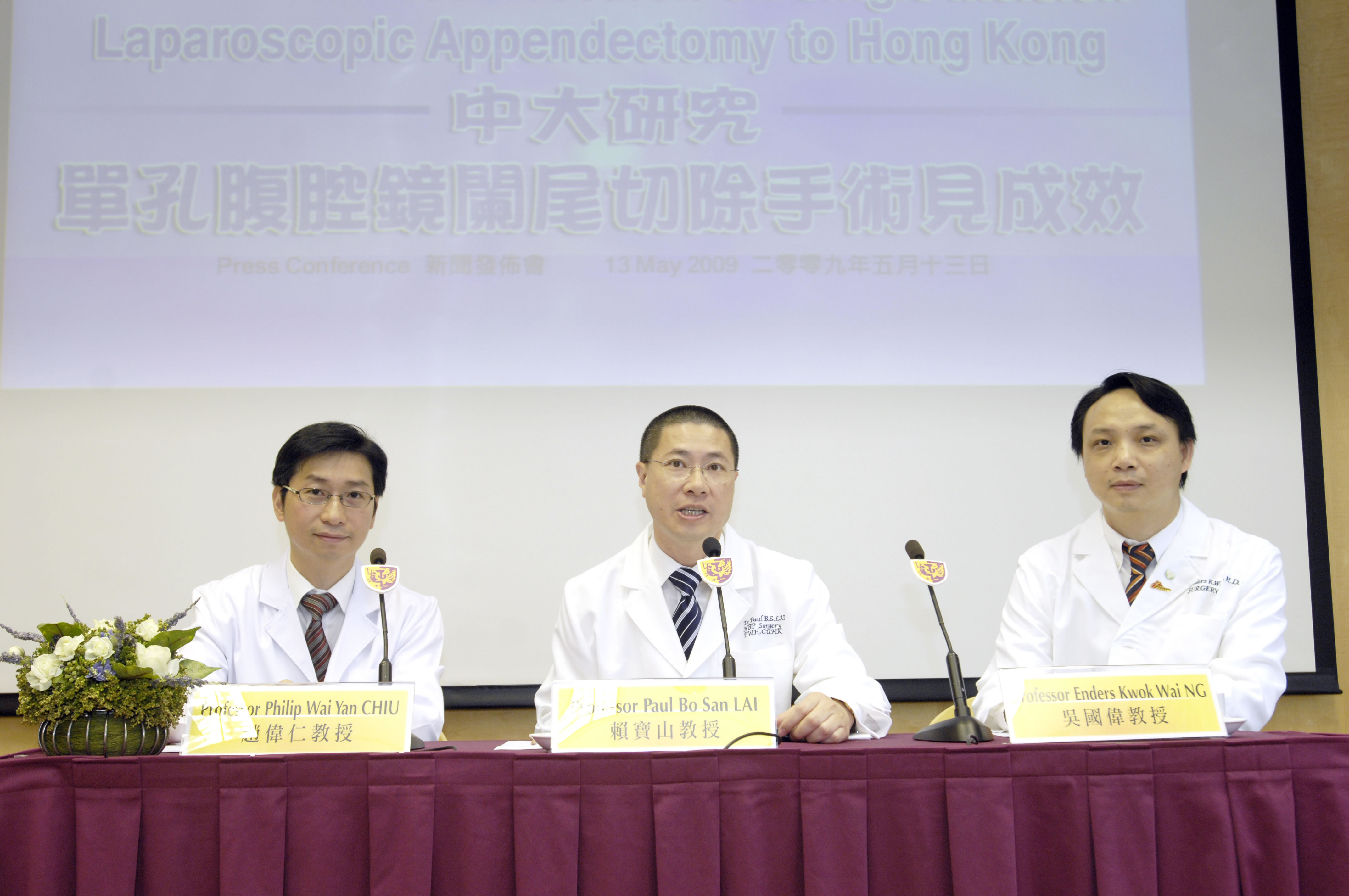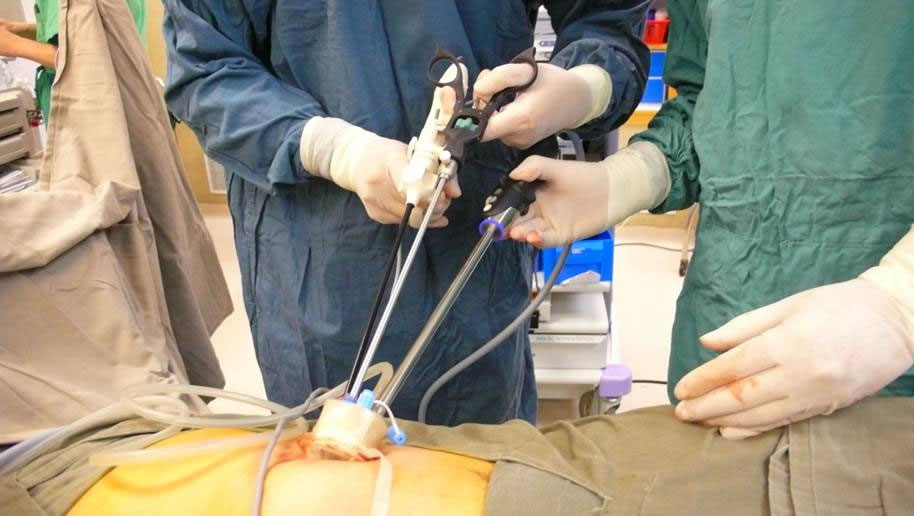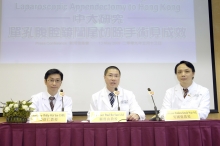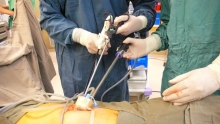CUHK
News Centre
CUHK’s Research on Single Incision Laparoscopic Appendectomy Bears Fruits
Acute appendicitis is one of the most common surgical emergencies worldwide. Every year, about 250 cases are treated in the Prince of Wales Hospital, and there are probably 2,000 new cases per year in Hong Kong. Conventional therapy entails surgical removal of the vermiform appendix through a right lower abdominal incision of about 4 to 5 inches long, which causes considerable postoperative wound pain and most patients have to refrain from normal daily activities for at least 2 to 4 weeks.
With the rapid development of minimally invasive surgery in the last two decades, laparoscopic appendectomy is now a widely accepted option for acute appendicitis in many institutes. A standard laparoscopic appendectomy requires at least 3 to 4 keyhole incisions over the lower abdomen. It has been shown in a large number of clinical studies (some of which were conducted at the Prince of Wales Hospital some 15 years ago) that the laparoscopic approach can reduce wound complications and lower analgesic requirement compared to open appendectomy.
Nevertheless, the pursuit of perfecting surgery does not cease as such. Recently, there is an increasing interest in the research of single incision laparoscopic operation, which aims at further reducing surgical trauma and wound pain of patients. From 12 April to 1 May 2009, the Department of Surgery at The Chinese University of Hong Kong (CUHK) applied this new technique to successfully perform 7 consecutive cases of single incision appendectomies on patients with clinical diagnosis of acute appendicitis. This group of patients consisted of 6 men and 1 woman, with age ranging from 21 to 52. The average operating time was less than 1 hour (20 to 60 minutes) in all cases except for the first one. There was no major postoperative complication. All patients were able to resume oral intake on day 1 and be discharged on day 2. The wound size was about 1.5 cm within the umbilicus.
In conclusion, single incision laparoscopic appendectomy is a novel, feasible and safe treatment approach for acute appendicitis. It has the advantages of less wound pain, faster recovery and significantly better cosmetic outcome when compared to the standard laparoscopic appendectomy. The Department of Surgery at CUHK believes that it may become a standard choice of treatment for acute appendicitis in the future.
(From left) Professor Philip Wai Yan CHIU, Associate Professor, Division of Upper Gastrointestinal Surgery, CUHK; Professor Paul Bo San LAI, Chairman, Department of Surgery, CUHK; and Professor Enders Kwok Wai NG, Head of Division of Upper Gastrointestinal Surgery, Department of Surgery, CUHK







